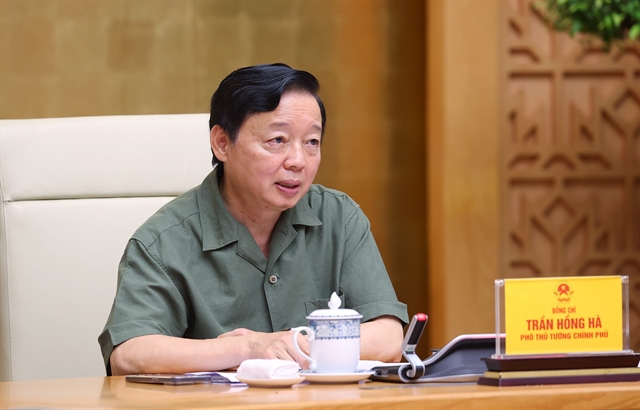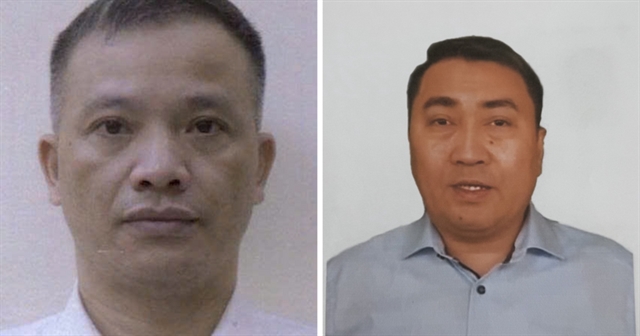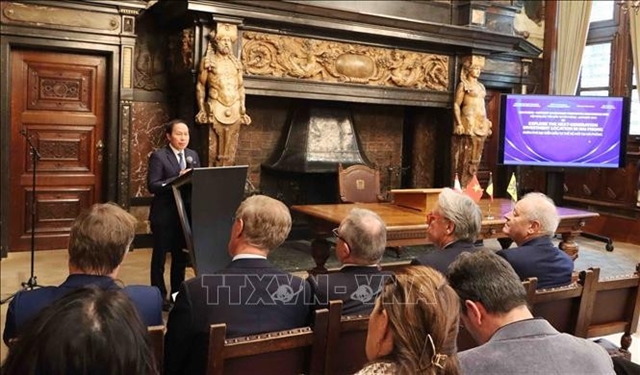 Economy
Economy

 |
| Deputy Prime Minister Trần Hồng Hà chairs the meeting. — VNA/VNS Photo Văn Điệp |
HÀ NỘI — The Ministry of Industry and Trade (MoIT), in collaboration with the Ministry of Construction, must work to simplify the installation process for rooftop solar panels, while maintaining stringent rules for businesses working within the sector.
Deputy Prime Minister Trần Hồng Hà gave the directive while focused on a draft decree regarding direct power purchase agreements between renewable energy producers and large electricity consumers, as well as policies to promote self-produced, own-use rooftop solar power.
According to the MoIT's Electricity Regulatory Authority, the draft decree covers critical aspects like direct electricity purchases via separate transmission lines or the national grid, implementation procedures and reporting frameworks.
MoIT has reviewed and refined the draft, which allows renewable energy producers to sell power directly through separate lines, without capacity restrictions.
The decree also permits retail electricity units within industrial zones to sign agreements with electricity companies and engage in long-term contracts with renewable energy producers.
At a meeting on Tuesday, the Deputy Prime Minister asked MoIT to clarify the electricity sector's responsibilities in ensuring system safety during transmission services for direct renewable energy transactions via the national grid.
Monitoring and updating accurate data on transmission capacities and regional loads are crucial for adjusting renewable energy development plans appropriately.
Direct electricity purchases not involving the national grid should be excluded from planning considerations.
The draft decree should also incentivise businesses to invest in electricity storage equipment at solar plants, enabling them to serve as base-load power sources during peak hours.
It should establish a database to track and publicise each customer's renewable energy consumption, supporting the Ministry of Natural Resources and Environment in issuing green credits to businesses.
The decree must include measures to address violations related to direct power purchases, such as registration, data updates, connections and post-inspection procedures.
Tô Xuân Bảo, Director of MoIT's Electricity and Renewable Energy Department, clarified that self-produced, self-consumed rooftop solar power should be consumed onsite and not sold or fed into the national grid.
Rooftop solar installations are permissible on various buildings, including residences, offices and industrial facilities, complying with legal regulations.
During discussions, participants reviewed the draft decree to prevent overlaps with direct power purchases.
They proposed allowing residents to sell surplus rooftop solar electricity to the grid, setting prices based on storage batteries and regulating excess production to prevent misuse, especially in industrial areas.
Safety standards and installation procedures for rooftop solar on existing and new buildings were also discussed.
Deputy PM Hà urged MoIT to look at possible financial incentives such as tax breaks, favourable interest rates and reduced installation costs, to encourage public adoption of rooftop solar panels, combined with storage, to allow power sales to Vietnam Electricity at base load rates during peak demand.
MoIT should mandate rooftop solar installations in public investment projects, ensuring safety for large-scale installations in industrial zones.
The ministry was tasked with analysing the profitability of new state-backed energy sources to guide policies supporting public adoption of rooftop solar.
The Ministry of Construction was directed to develop and issue standards for clean energy and rooftop solar installations with storage systems, enabling their integration as base load power sources in construction projects. — VNS




